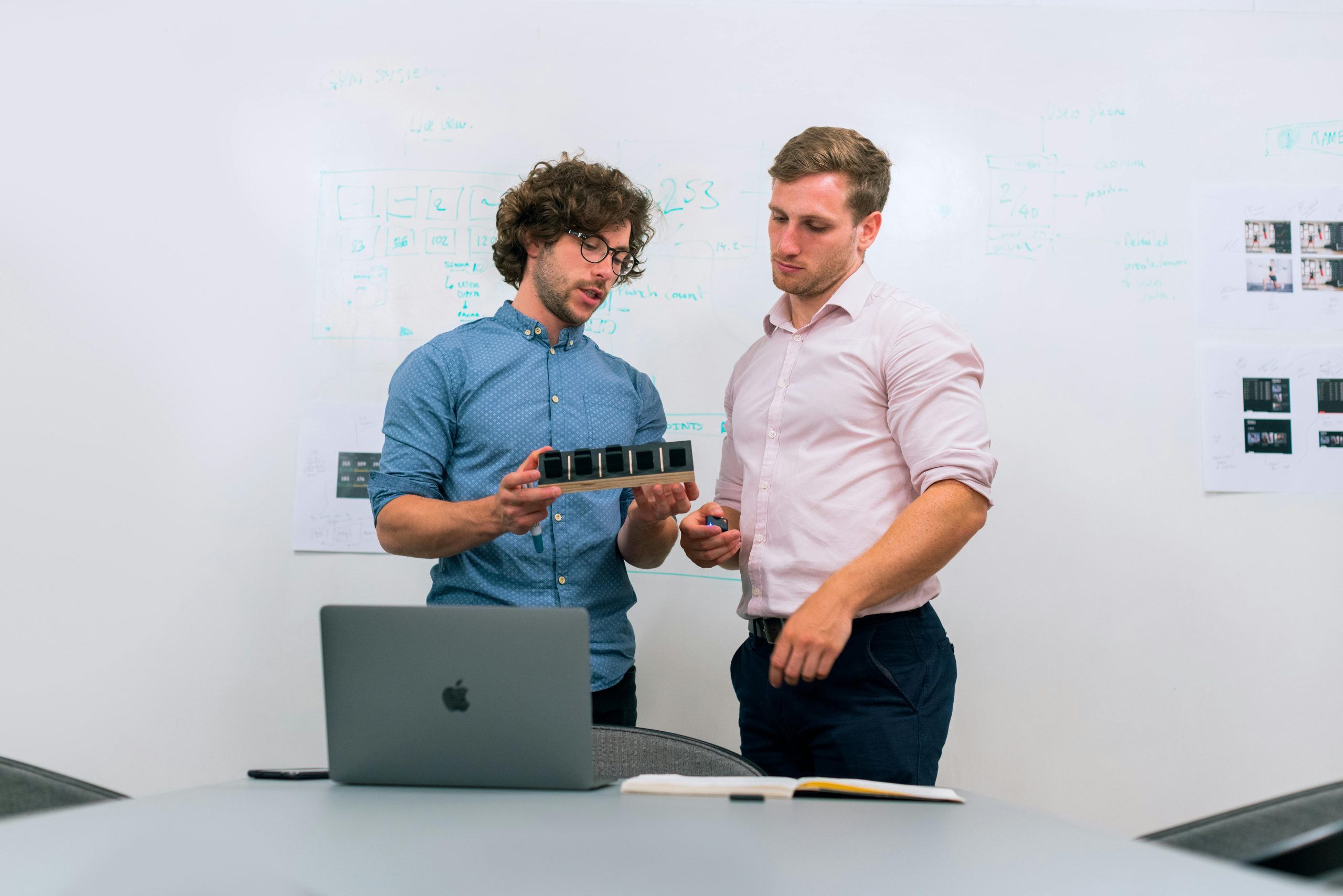Executive Summary
Product-market fit is the critical milestone where your product perfectly satisfies strong market demand, but achieving it requires more than building a great product. This comprehensive guide explores what product-market fit truly means, particularly in Indonesia’s diverse market landscape, and identifies the five most common mistakes that derail founders on their journey.
Key takeaways include:
- Product-market fit goes beyond initial traction—it requires sustainable user engagement and organic growth
- Common founder mistakes include falling in love with solutions rather than problems, misinterpreting early metrics, and scaling prematurely
- The Indonesian market presents unique challenges including cultural nuances and varying digital adoption levels
- ISTAR Technology’s framework emphasizes deep market immersion, iterative problem validation, and systematic feedback integration
- Measuring fit requires both quantitative metrics (like the 40% “very disappointed” threshold) and qualitative indicators
- Product-market fit is an ongoing journey, not a one-time achievement
Whether you’re a first-time founder or experienced entrepreneur, this guide provides actionable insights to help you navigate toward genuine product-market fit while avoiding costly pitfalls that plague many startups.
Product-market fit represents the holy grail of startup success—that magical moment when your product perfectly aligns with market demand. Yet despite its critical importance, many founders struggle to understand what product-market fit truly means, how to achieve it, and most importantly, how to avoid the costly mistakes that can derail their journey toward this crucial milestone.
At ISTAR Technology, we’ve witnessed countless Indonesian startups navigate this challenging terrain, and we’ve observed patterns in both success and failure that offer valuable insights for founders at every stage of their journey.
Understanding Product-Market Fit: Beyond the Buzzword
Product-market fit, coined by venture capitalist Marc Andreessen, occurs when you’ve built a product that satisfies a strong market demand. It’s the point where customers are actively seeking your solution, using it regularly, and recommending it to others. However, this definition, while accurate, barely scratches the surface of what product-market fit truly entails.
In the Indonesian market context, product-market fit often carries additional layers of complexity. Cultural nuances, diverse economic conditions across different regions, and varying levels of digital adoption create unique challenges that founders must navigate. A product that achieves fit in Jakarta might struggle in Surabaya, not due to quality issues, but because of different market dynamics and consumer behaviors.
True product-market fit manifests in several measurable ways: organic growth through word-of-mouth, high customer retention rates, increasing user engagement, and most tellingly, the pain customers express when they can’t access your product. Sean Ellis, growth hacker and entrepreneur, proposed a simple test: if at least 40% of your users would be “very disappointed” if your product disappeared tomorrow, you’ve likely achieved product-market fit.

The Anatomy of Product-Market Fit
Understanding product-market fit requires dissecting its core components. The “product” element encompasses not just your core offering, but the entire user experience—from initial discovery through ongoing support. It includes your pricing strategy, user interface, feature set, and the emotional connection users develop with your brand.
The “market” component is equally complex. It’s not just about identifying a target demographic, but understanding the specific problem your audience faces, their willingness to pay for a solution, and their buying behavior. In Indonesia’s diverse market, this might mean recognizing that your product serves different purposes for users in different socioeconomic segments.
The “fit” represents the intersection where your product naturally aligns with market needs without excessive marketing pressure or artificial demand creation. When achieved, this fit creates a self-reinforcing cycle: satisfied customers become advocates, driving organic growth that reduces customer acquisition costs while increasing lifetime value.
Common Founder Mistakes: The Path to Misalignment
1. Falling in Love with the Solution Instead of the Problem
One of the most prevalent mistakes founders make is becoming emotionally attached to their product concept rather than the underlying problem it solves. This attachment blinds them to market feedback and prevents necessary pivots.
Consider the case of a Jakarta-based fintech startup that spent two years perfecting a cryptocurrency trading platform for Indonesian millennials. The founders were convinced their sophisticated algorithm and sleek interface would revolutionize retail investing. However, they failed to recognize that their target market was more concerned with basic financial literacy and safe, regulated investment options than advanced trading features.
The solution? Always start with the problem. Conduct extensive problem validation before building any product. Understand the intensity of the pain point, how customers currently solve it, and what they’re willing to sacrifice for a better solution.
2. Misinterpreting Early Metrics
Founders often mistake early adoption for product-market fit. High initial download numbers, positive early reviews, or successful beta testing can create a false sense of security. These metrics, while encouraging, don’t necessarily indicate sustainable product-market fit.
Real product-market fit metrics include retention rates, user engagement depth, and organic growth patterns. If your users download your app but rarely open it, or if they use it once and never return, you haven’t achieved fit regardless of your initial traction numbers.
The key is to focus on cohort analysis and user behavior patterns rather than vanity metrics. Track how user engagement evolves over time, measure the percentage of users who become regular, active users, and analyze the reasons behind churn.
3. Premature Scaling
The pressure to scale quickly, especially in Indonesia’s competitive startup ecosystem, often leads founders to expand before achieving true product-market fit. This mistake can be catastrophic, as it amplifies fundamental problems rather than solving them.
Scaling before product-market fit is like trying to fill a leaky bucket with a fire hose. You might achieve temporary growth, but the underlying issues will eventually surface, often when you’ve exhausted your resources and lost credibility with investors and customers.
Instead, focus on achieving strong unit economics and consistent user satisfaction within a smaller, well-defined market segment before expanding. This approach allows you to refine your product and business model with limited resources while building a foundation for sustainable growth.
4. Ignoring Market Feedback
Many founders, particularly those with strong technical backgrounds, tend to rely too heavily on their own judgment rather than systematic market feedback. They build features they think customers want rather than what customers actually need.
This mistake is particularly common in Indonesia’s tech scene, where founders often assume their personal preferences represent broader market needs. A product that solves the founder’s problem might not address the pain points of their target market, especially when considering Indonesia’s diverse socioeconomic landscape.
Effective founders develop systems for continuous market feedback. This includes regular customer interviews, usability testing, and careful analysis of user behavior data. They remain open to pivoting based on market signals, even when it means abandoning features they’re personally excited about.
5. Underestimating Market Education Requirements
In emerging markets like Indonesia, founders often underestimate the effort required to educate their market about new solutions. They assume if they build a better product, customers will automatically understand its value and adopt it.
This assumption overlooks the reality that behavioral change takes time and intentional effort. Customers need to understand not just what your product does, but why they should change their current behavior to use it. This is particularly relevant for products that introduce new concepts or disrupt traditional ways of doing things.
Successful founders in Indonesia often become educators first and sellers second. They invest significant resources in content marketing, community building, and user education to help their market understand and appreciate their solution’s value.
The ISTAR Approach: Building Product-Market Fit in Indonesia
At ISTAR Technology, we’ve developed a framework for helping Indonesian startups achieve product-market fit that accounts for local market dynamics and cultural considerations.
Deep Market Immersion
Our approach begins with deep market immersion. This involves spending significant time in your target market, not just conducting surveys or focus groups, but actually experiencing the problem firsthand. For B2B products, this might mean working alongside your target customers. For consumer products, it could involve living and working in the communities you serve.
This immersion helps founders understand the context surrounding their target problem. In Indonesia, this context often includes factors like infrastructure limitations, regulatory environments, and cultural preferences that significantly impact product adoption.
Iterative Problem Validation
We emphasize iterative problem validation over product validation. This means continuously testing whether the problem you’re solving is significant enough to warrant a solution, and whether your understanding of the problem aligns with market reality.
This process involves creating problem hypotheses, testing them with potential customers, and refining your understanding based on feedback. Only when you’ve validated a significant, widespread problem should you begin building a solution.
MVP Development with Local Considerations
Our MVP development process accounts for local market conditions. This might mean building for lower-bandwidth environments, considering local payment preferences, or adapting user interfaces for different levels of digital literacy.
The goal is to create the simplest possible product that can test your core value proposition within the constraints of your local market. This approach helps you validate product-market fit without over-engineering or over-investing in features that might not matter to your users.
Systematic Feedback Integration
We help founders build systems for continuous feedback integration. This includes both quantitative metrics and qualitative insights that help you understand not just what users are doing, but why they’re doing it.
These systems help you distinguish between feature requests that indicate deeper problems and those that represent nice-to-have improvements. They also help you identify when you’ve achieved product-market fit and when it’s appropriate to begin scaling.

Measuring Product-Market Fit: Beyond the Numbers
While metrics are important, measuring product-market fit requires a combination of quantitative and qualitative indicators. The Sean Ellis test, mentioned earlier, provides a useful benchmark, but founders should also look for organic growth patterns, customer behavior changes, and market feedback quality.
Organic growth indicates that your product has achieved sufficient value that customers are willing to recommend it without incentive. This type of growth is sustainable and indicates genuine product-market fit rather than artificial demand creation.
Customer behavior changes, such as increased usage frequency or expansion into new use cases, suggest that your product is becoming integral to users’ lives or workflows. These changes indicate deepening product-market fit that’s likely to be sustainable over time.
The quality of market feedback also evolves as you approach product-market fit. Early feedback tends to focus on missing features or usability issues. As you achieve fit, feedback shifts toward optimization suggestions and requests for adjacent functionality.
The Path Forward: Continuous Evolution
Product-market fit isn’t a destination but a continuous journey. Markets evolve, customer needs change, and new competitors emerge. Successful founders understand that maintaining product-market fit requires ongoing attention and adaptation.
This is particularly relevant in Indonesia’s rapidly evolving market. Digital adoption rates are accelerating, regulatory environments are changing, and consumer preferences are shifting. Products that achieve fit today might lose it tomorrow if founders become complacent.
The key is building organizational capabilities for continuous market sensing and product adaptation. This includes maintaining close customer relationships, monitoring market trends, and preserving the agility to pivot when necessary.
At ISTAR Technology, we believe that achieving product-market fit is both an art and a science. It requires systematic approaches combined with intuitive understanding of your market. By avoiding common mistakes and focusing on genuine customer value creation, Indonesian founders can build products that not only achieve fit but maintain it over time.
The journey toward product-market fit is challenging, but it’s also the foundation for building meaningful, sustainable businesses that create value for customers, investors, and society. As Indonesia’s startup ecosystem continues to mature, the founders who master this journey will be the ones who build the next generation of successful Indonesian technology companies.

